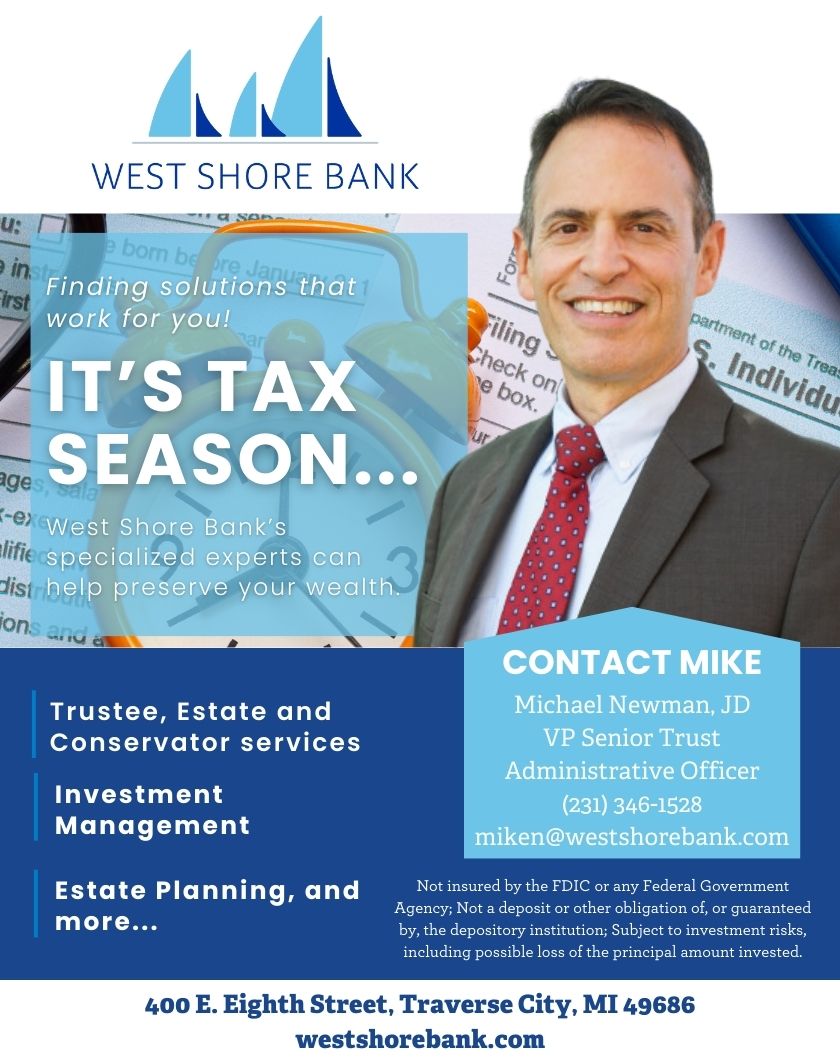
Firm Studies Parking Challenges, Solutions For Downtown
By Beth Milligan | Aug. 3, 2017
There are an estimated 3,000 managed parking spaces in Traverse City’s parking system. Thomas Brown, principal at transportation consulting firm Nelson/Nygaard, hopes to help city officials efficiently utilize every last one of them.
Brown and his team are nearing the end of a year-long transportation demand management (TDM) study of downtown Traverse City. Nelson/Nygaard was hired last fall to analyze both year-round and seasonal parking downtown, providing detailed recommendations for improving downtown’s existing parking systems, addressing future parking needs, and increasing pedestrian, bicycle, and mass transit options. Nelson/Nygaard provided a first look at the firm’s findings Wednesday night at a public event at the State Theatre.
Brown wants to make one point clear upfront. “We’re not trying to get people out of their cars or make it harder for them to come downtown,” he says. “It’s not about making downtown too expensive to park. It’s about redistributing demand. We’re really after marginal changes…small victories are huge wins in this kind of realm.”
Key among the issues creating parking challenges in the city center is a heavy concentration of commuters, which Brown says is exacerbated by the fact workers are priced out of living downtown due to high housing costs and low wages. A survey of 432 downtown employees and volunteers found that 93 percent of hourly and 88 percent of salaried employees drive alone and park when going to work. Nearly two-thirds of volunteers do the same. The average parking cost for survey respondents was $20 per month.
“That would be considered cheap in many communities, but it’s perceived to be expensive by a lot of people here,” notes Brown.
Downtown is also “being transformed by residential growth,” he says, with a large number of developments coming online. While many of those developments will offer on-site parking, Nelson/Nygaard suggested the city should instead be providing parking in centralized facilities such as decks, which would lower per-unit housing costs and create multi-purpose parking spaces for the community.
“One of the big opportunities we see is for the DDA (Downtown Development Authoirty) to provide more parking for developments instead of developments providing their own parking,” says Brown. “You end up with greater efficiencies, because those spaces can be recycled to accommodate public uses.”
A strong commercial shift toward restaurants and bars downtown is also changing parking demands, Brown says, “because you’re seeing a second peak in the evenings starting to emerge.” Many communities across the country are rethinking 8am to 6pm year-round parking fee schedules and instead pricing parking based on demand – whether by time of day, season or location. “Demand here is really more lunch through dinner,” Brown says. “And the right price in January is probably not the right price in August. You want to change that without causing too much complexity, so that’s one of the things we’ll be looking at (in the final report).”
Location is a critical issue when it comes to downtown parking, according to Nelson/Nygaard. Despite popular belief there’s “no parking” available downtown, the firm found the bigger underlying issue is overreliance on key parking spaces like Front, Cass and Union streets and underutilization of peripheral lots. “Most people want to park right in the heart of the action and are looking at the areas they’re most familiar with,” Brown says. “Unfortunately, those are all the areas most other parkers are also familiar with.”
Several solutions could help redistribute cars throughout available downtown spaces, with a target goal of having 85 percent occupancy and 15 percent availability in the parking system. One option would be creating “zones” or “tiers” of parking, with prices higher in peak spaces and less expensive in peripheral lots. “If everything is priced the same, people will just keep going to those core blocks and hope to get lucky,” Brown says.
As the city continues to upgrade its parking meters, smart meters could also someday inform users through a phone app what spaces are available downtown. A pay-by-phone service could allow owners of private parking spaces or lots to open those up to the public during evenings, weekends and events, with parkers paying for the privilege through an app. City parking staff have also discussed the possibility of a public valet service, which – in addition to offering convenience to shoppers and diners – would generate revenue and allow cars to be stored off-site in underutilized lots.
A more straightforward but challenging solution would simply be to reduce the number of cars parking downtown. The final version of Nelson/Nygaard’s report, due this fall, is expected to include recommendations on improving bike racks and amenities, providing better connections between regional trails and downtown streets, improving ride-sharing and shuttle services, and offering perks for smart commuting, such as prime parking spots for carpoolers. The DDA is exploring a “continuous service circulator” that would provide constant shuttle service between major downtown destinations and parking decks, while Bay Area Transportation Authority (BATA) hopes to introduce a high-frequency bus line looping between downtown, Northwestern Michigan College, Munson Medical Center and Grand Traverse Commons every 12 to 15 minutes.
Brown says that while pricing could be viewed as a “stick” used to discourage parking in overused areas, the majority of strategies under consideration by the firm are “carrots” meant to incentivize efficient transportation and parking. The goal is not to stop everybody from parking downtown, he says, but to gradually make small shifts in traffic patterns by eliminating any barriers for those who do want to bike, walk or take transit. “If you have a five percent shift (to non-motorized transportation), that frees up 150 spaces,” Brown says. The city also needs to make non-motorized options more attractive to drivers in the hopes that even among the pool of dedicated parkers, some will eventually be swayed to considering other modes of transportation.
Brown says he understands many people believe they should be able to park downtown for free. But with maintenance costing the city approximately $2,500 per parking spot per year, that’s not a realistic objective, he says. Unchecked demand would also further strain – rather than alleviate – parking issues downtown. “It costs money to provide these spaces, and they also take up valuable land where there is a demand to do other things,” Brown says. “The conversation about parking tends to be subjective and personal and emotional. But it’s important to have hard data so we can look at what’s really happening…and find solutions.”
Comment






